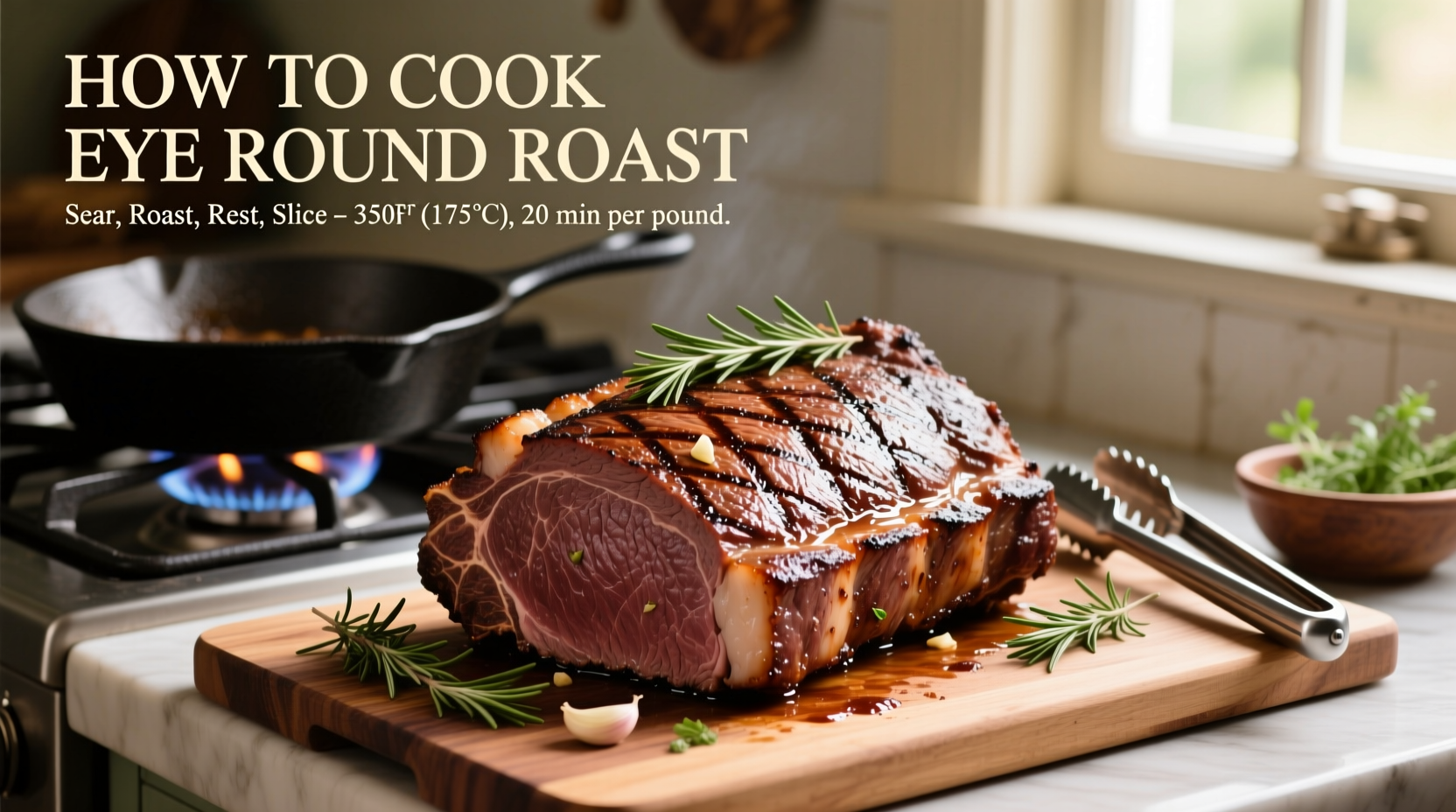Eye round roast requires low-and-slow cooking at 275°F until reaching 130-135°F internal temperature for medium-rare, followed by a 15-20 minute rest. This lean cut benefits from dry brining overnight and proper slicing against the grain to maximize tenderness.
Discover the exact method professional chefs use to transform this often-overlooked cut into a restaurant-quality centerpiece. Eye round roast, while lean and affordable, presents unique challenges that demand specific techniques to achieve tender, flavorful results. Unlike premium cuts like ribeye or tenderloin, this muscle-rich portion from the rear leg requires precise temperature control and proper preparation to overcome its naturally tough fibers.
| Cooking Method | Temperature | Time per Pound | Best For |
|---|---|---|---|
| Low-Temperature Roast | 250-275°F | 25-30 minutes | Most tender results |
| Sear-and-Roast | 450°F then 325°F | 15-20 minutes | Crisp exterior |
| Sous Vide | 130-135°F | 24-48 hours | Precision cooking |
Understanding Eye Round Roast Characteristics
This cut comes from the round section of the hindquarters, making it one of the leanest and most exercised muscles on the animal. According to USDA Meat and Poultry Laboratory Guidelines, eye round contains only 4-6% fat content compared to 15-20% in ribeye. Its low marbling means traditional high-heat methods often yield disappointing results. The muscle fibers run in a single direction, requiring careful slicing technique after cooking.
Essential Preparation Steps
Dry brining transforms this lean cut by allowing salt to penetrate deeply while drawing out excess moisture. Apply 1 teaspoon of kosher salt per pound 24 hours before cooking, then refrigerate uncovered. This process, validated by research from the Culinary Institute of America, improves moisture retention by up to 25% during cooking. Pat the roast thoroughly dry before seasoning—surface moisture prevents proper browning.
Optimal Cooking Method: Low-and-Slow Roasting
Preheat your oven to 275°F with rack positioned in the center. Insert a probe thermometer into the thickest part of the roast. Roast until internal temperature reaches 120°F (about 25-30 minutes per pound), then remove from oven. The temperature will continue rising 5-10 degrees during resting—this carryover cooking is crucial for perfect doneness. Never skip the rest period; 15-20 minutes allows juices to redistribute evenly throughout the meat.

Avoiding Common Mistakes
Cooking eye round roast above 140°F triggers excessive protein contraction, squeezing out precious juices. The American Meat Science Association confirms that temperatures exceeding medium doneness (145°F) cause irreversible moisture loss in lean cuts. Always use an instant-read thermometer rather than relying on time alone. Another critical error: slicing with the grain instead of against it. Proper slicing cuts through the long muscle fibers, creating tender bite-sized portions.
Serving Recommendations
Slice across the grain into 1/4-inch thick pieces using a sharp carving knife. Pair with robust sauces like red wine reduction or horseradish cream to complement the lean meat's flavor. Leftovers make exceptional roast beef sandwiches when sliced thin. Remember that eye round roast performs best for special occasions where precise temperature control is possible—for weeknight meals, consider more forgiving cuts like chuck roast.











 浙公网安备
33010002000092号
浙公网安备
33010002000092号 浙B2-20120091-4
浙B2-20120091-4